About Art - What Do We Really Mean
Mark Rothko, an American artist who described himself as an “abstract painter”, once said about art that he was not the kind of person interested in the relationship of form, color or similars. He didn’t define himself as an abstractionist, but rather as a person interested only in expressing basic human emotions such as doom, tragedy, ecstasy and so on. This was one person’s vision of art, but what do we mean by art today? Why is defining the concept so difficult?
This article is an exploration of the meaning of art and an attempt to understand the relationship between art and artists, with some useful insights via interviews with both traditional and digital artists.
Further Reading on SmashingMag:
- Pop Art Is Alive: Classics and Modern Artworks
- Milton Glaser on Art & Design
- Eight Inspiring Stories Of ASCII Art
- Modern Art Movements To Inspire Your Logo Design
- Icons Of Digital Design
1. About Art - What Is It?
This question pops up often, and with many answers. Many argue that art cannot be defined. We could go about this in several ways. Art is often considered the process or product of deliberately arranging elements in a way that appeals to the senses or emotions. It encompasses a diverse range of human activities, creations and ways of expression, including music, literature, film, sculpture and paintings. The meaning of art is explored in a branch of philosophy known as aesthetics. At least, that’s what Wikipedia claims.
Art is generally understood as any activity or product done by people with a communicative or aesthetic purpose—something that expresses an idea, an emotion or, more generally, a world view.
It is a component of culture, reflecting economic and social substrates in its design. It transmits ideas and values inherent in every culture across space and time. Its role changes through time, acquiring more of an aesthetic component here and a socio-educational function there.
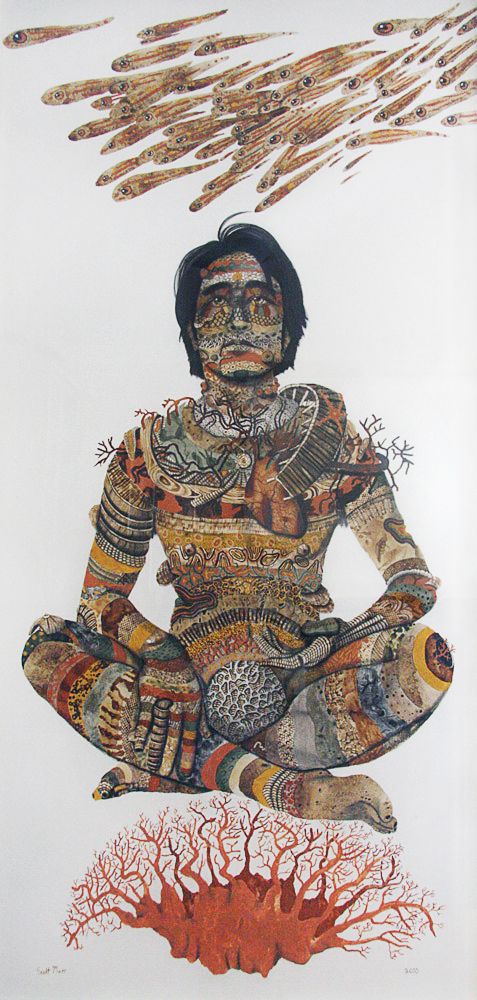
Everything we’ve said so far has elements of truth but is mainly opinion. According to Wikipedia, “Art historians and philosophers of art have long had classificatory disputes about art regarding whether a particular cultural form or piece of work should be classified as art.”
The definition of art is open, subjective, debatable. There is no agreement among historians and artists, which is why we’re left with so many definitions of art. The concept itself has changed over centuries.
The very notion of art continues today to stir controversy, being so open to multiple interpretations. It can be taken simply to mean any human activity, or any set of rules needed to develop an activity. This would generalize the concept beyond what is normally understood as the fine arts, now broadened to encompass academic areas. The word has many other colloquial uses, too.
In this article, we mean art as a form of human expression of a creative nature.
2. The Evolution Of The Concept Of Art
While the definition of art has changed over the years, the field of art history has developed to allow us to categorize changes in art over time and to better understand how art shapes and is shaped by the creative impulses of artists.
Having a solid grasp of art history, then, is important. I spoke with Alexander Daniloff and Jonathan Ball about the concept of art through history and about whether tracing a line through traditional and contemporary art is possible.
Alexander Daniloff is a Russian artist who lives and works in Italy. His focus is painting, although he has worked in several media. Lately, he has worked on children’s illustrations. He has participated in various events and illustration competitions and has illustrated three books. He has held numerous individual and group exhibitions in Italy, Russia, Holland, Spain, Finland and the US.
Jonathan Ball is the creative behind Poked Studio, an innovative company committed to developing creative visual solutions. That’s not all: among its services, Poked Studio offers illustration; Web, graphic and blog design; 3-D rendering and visualization; motion graphics; children’s book illustration; Flash websites; and games.
Question: Can we trace a line from traditional to contemporary art?
Alexander Daniloff: I don’t think we can say anything without falling into controversy, even me. I have a traditional view and prefer artwork that speaks for the artist or period. I can’t explain what contemporary art is, or at least what it’s meant to be. Yes, you can trace a line from traditional to contemporary art, but not a straight one. Perhaps it is a parabola that goes up and then down, or a spiral. We don’t know. All we can say is that the art market has developed, which affects the art itself. With what we call contemporary art, words and explanations are always worth more.
Visual arts have been transformed by articles and critical essays; meanwhile, the works themselves have become mute. In the theater, the curators and critics have taken up the front row. This is my view on the difference between contemporary and traditional art.
I personally prefer art measured in human dimensions: art that whispers and doesn’t shout, art that covers me and makes me fly and does not crush. But I must confess, some of these modern things attract me; for example, mural painting (graffiti) and abstract things.
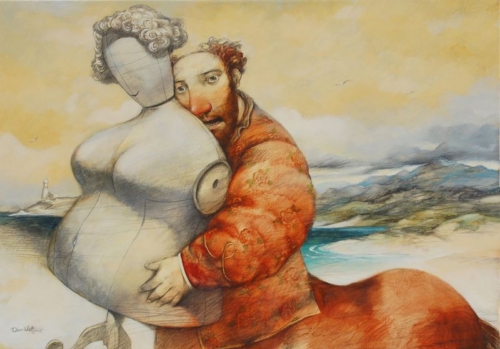
Jonathan Ball: Yes, most definitely [we can draw a line from traditional to contemporary art]. Many of the same techniques are used, just in slightly different ways and with different tools. The same principles apply, however you create art.
I see a line particularly running through the stylized form of Japanese art such as Hokusai and contemporary stylized graphic illustration.
Question: Compared to the evolution of traditional art, how would you describe the development of digital (or new media) art?
Jonathan Ball: Digital art has obviously developed much more quickly than the thousands of years of hand-crafted techniques. A whole generation has been brought up on “Photoshop” and other tools, whereas earlier generations used pen and pencil.
Still, I believe that digital art is still in its infancy. Despite what seems an enormous amount of progress in computer hardware, general computing and even the computing available to most design studios is just not fast enough to easily reproduce art on the scale and level of detail possible with traditional media. Go to any national gallery, and you will see works on an enormous scale. Try reproducing a 10-foot canvas with the resolution of a hand-painted work of art in a 3-D program, and you’ll find it can’t cope. In fact, most programs will struggle to render a detailed picture at, say, 300 DPI at just A4 size.
While a painting may appear to be just splotches and blobs, when you go up to it close, the patterns are beautiful by themselves, full of color, intensity, saturation and texture. Go close to digital art or a TV screen and you’ll see a mess of distortion and artifacts.
Once screen resolution is on par with printed media, and once computer technology allows us to easily create large, highly detailed work at speed, then digital will have caught up to traditional media.
Most digital art of the early-21st century is designed to be viewed on low-resolution devices. Much of this art will be obsolete when higher-resolution screens and devices are developed over the next century. And much that has been stored only on hard drives will be lost forever as drives fail and websites close or are redeveloped.
I find it a shame that so much great work is reproduced at such a limited resolution and scale and not stored in a way that keeps it safe for future generations.
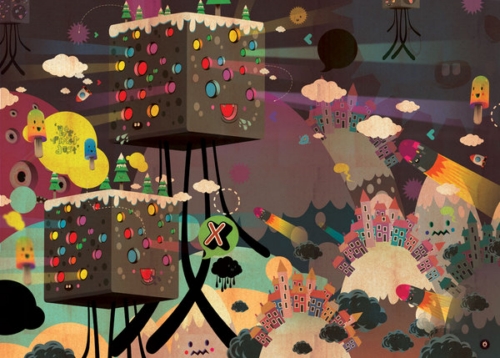
Question: Tell us about art and your favourite art movement.
Jonathan Ball: Difficult, because I like so many styles. But I find that if I’m in an art gallery, I love contemporary painting because it holds so many surprises and is less predicable than previous eras.
I love quirky contemporary illustration, particularly low-brow art forms and gothic-mythology mixtures.
3. Aesthetics In Digital Art
Moving into the mid-20th century, the conceptual transformations that arose from new approaches to art led to a crisis of aesthetics, as was manifested in new art media.
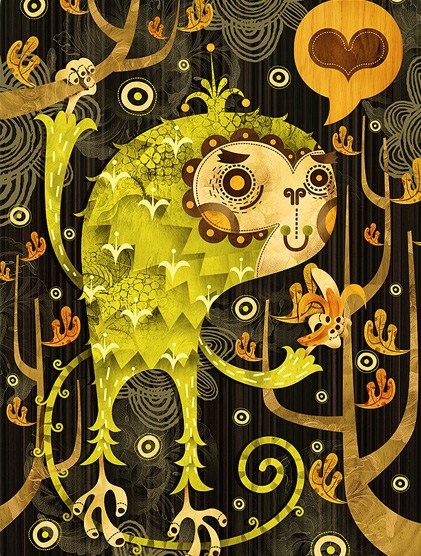
While borrowing many of the conventions of traditional media, digital art can draw upon aesthetics from many other fields. But various criticisms have been made against it: for example, given the variety of tools at their disposal, how much effort do digital artists really have to put into their work?
I asked Jan Willem Wennekes, also known as Zeptonn, for his opinion on this. He is a freelancer who specializes in illustrative design and art direction, with a focus on eco-friendly and environmental projects.
Jan Willem Wennekes: The question seems a bit ambiguous. On the one hand, there seems to be a question about the effort required to create digital art. That is, some people may think that using digital media to create art is easier than using traditional media. On the other hand, there seems to be a question of whether digital art is an art form in itself (or maybe at all?).
With respect to the first question, I think that working with digital media (mostly the computer, mouse, Wacom, scanner, software, etc.) does not have to differ from creating art in other media. The computer and all the tools generated by the software are still what they are: tools! You have to master those tools just as you have to master any other tools. For example, if you do not understand how light works, you won’t be able to create artwork with correct lighting, and so on. If you don’t know how the pen tool works in Illustrator, then you won’t be able to create good artwork, just like a traditional artist who doesn’t know how to use a pencil. You still have to master color theory and all the other things that are essential to creating a good or stunning piece of art. In that sense, it doesn’t matter whether it is a painting or a print. Simply put, you have to master all the tools and theory, just as you had to master them before. And the better you master them, the better your artwork can be.
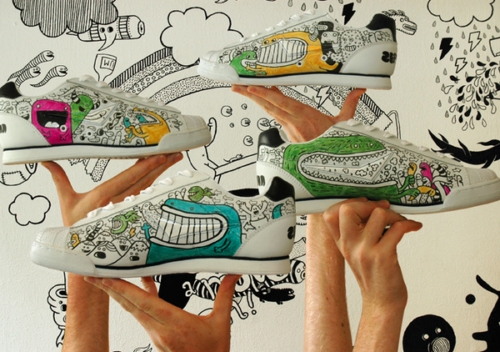
Jan Willem Wennekes: Now, one can wonder whether digital art is a distinct art form. This is a difficult question and not easy to answer. I think the difference here is that “digital art” is more of a group term than just one art form. There are many types of digital art: some look a lot like paintings, some look like photographs, some look like drawings, while others appear quite new and unique (e.g. computer generated artwork). So in a sense, digital art consists of both overlapping and new kinds of art.
Photography was once viewed as a competitor to portrait painting, but in the end it became its own art form, with many directions and fields of interest. In effect, painting benefitted from the rise of photography, and each added to the other and renewed interest in art in general. Nowadays, we don’t view photography as a competitor to painting; we see them as different media, with different benefits and drawbacks. I think the same holds for newer digital art forms.

4. Art As We Know It Today
The 20th century was a turning point in our conception of art, which is mainly why contemporary artists frequently reach for new concepts, break with tradition and reject classic notions of beauty. All these factors have given birth to abstract art. The artist no longer tries to reflect reality, but rather tries to give expression to their inner world and feelings.
The old definitions of art have become obsolete. Today, art is an evolving and global concept, open to new interpretation, too fluid to be pinned down.

I interviewed Nate Williams and Travis Lampe to explore new elements of contemporary art and to answer the question, what new elements and principles are evident in today’s art.
Nate Williams, also known as Alexander Blue, is an artist, illustrator and designer from the US. He has extensive experience in various facets of the illustration industry, and he has a wide variety of clients. His illustrations are aimed at both adults and children. He has also worked in the advertising world and in publishing, music, fashion, textiles, home decor, merchandising, posters, press and social expression.
Travis Lampe is an illustrator who currently lives and works in Chicago. He worked as an art director in advertising. After a two-year stint in Warsaw, he returned to Chicago and tried his hand in the art and illustration scene. He enjoys making art and toys, and he has shown in fine galleries throughout the US and in Europe.
Question: How much influence does new media have on your work? What is your relationship to digital art? Do you consider yourself a traditional artist?
Jonathan Ball: It has a lot of influence. I think because of my knowledge of programming, it influences my work. I think in terms of modular parts and variables.
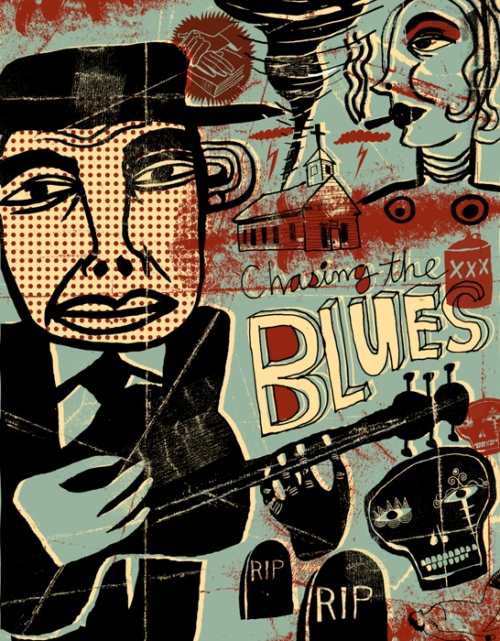
Travis Lampe: I’m a traditional artist—I work in acrylic—but I wouldn’t be able to operate without computers. When I design toys, for example, I use computers to scan and create vector art from my original paintings. I don’t create digital art in and of itself, though. Purely digital work can be beautiful, but for me there is value in having a tangible and unique product, as opposed to a set of data.
No doubt, though, I’ve been influenced in my traditional art by being exposed to ideas that I’ve discovered on the Internet. It’s a great place to find old-timey cartoons, for example.
Question: Travis, if the purpose of art was once to create beauty and to imitate nature, today the concept has evolved dynamically and is constantly changing. In your opinion, how has the Internet and new ways of communicating influenced the development of visual arts, its conceptual premises and its physical execution?
Travis Lampe: The Internet most influences the development of art simply by exposing more people to more art. Unfortunately, a lot of it is really, really crappy, as you would expect. Anyone with a ballpoint pen and digital camera can post their art for the world to see. And that’s okay. I think the cream just naturally rises to the top. Ideas are still what’s important, far more so than technical skill, and the Internet hasn’t changed that at all. I’ve seen a lot of ballpoint pen art that I really like.
As far as physical execution goes, it’s evolved the way it always has: as soon as a new medium arrives, there’s a scramble to use it in new and creative ways. I don’t know that the Internet has affected the physical execution of art so much as computers themselves have. It’s just made it easier to disseminate.
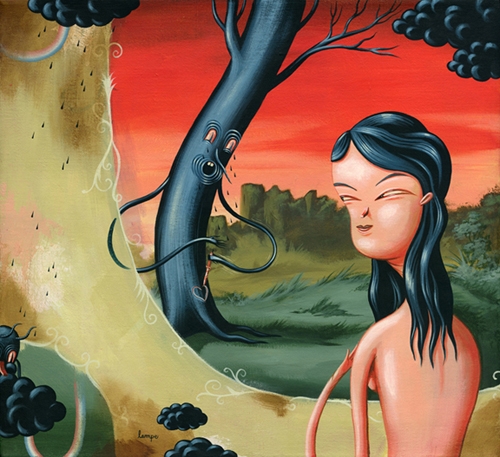
More communication is great for PR and in that way is a great help to artists. And more communication should equal more ideas bouncing around, which ideally should result in better conceptual thinking. But most of the “communication” is fluff. And I think there’s a threshold beyond which the constant connectedness ceases to be helpful. Artists need some disconnected time for the creative ideas to coalesce. Successful artists are the ones who are disciplined and able to balance all of this, I guess.
Question: Would you say that art and the new, social Web have a connection? Are social media a viable way to improve artistic communities?
Jonathan Ball: Of course. Art has a connection to anything in our environment that influences its creators. As far as social media goes, I think being able to communicate better is always an improvement.
Travis Lampe: Social media is great for sharing results; it’s allowed me to connect with and see the work of other artists who I admire on a constant basis. And it makes working long hours in a basement a bit less of a lonely enterprise when you can show the world what you’ve done the moment you’ve finished. On the other hand, social media are a constant distraction. When I want to get work done, I disconnect. So I love it and hate it equally.
5. New Media Revolution And Its Relationship To Artists
Visual arts comprise many forms of art—painting, drawing, sculpture, music, literature and performance art being the most widely recognized. However, with the technological revolution, others forms have emerged.

So, what exactly is the relationship between these new forms of expression and contemporary artists? Max Kostenko and Pino Lamanna kindly answered my questions, giving us insight into the topic.
Max Kostenko is a Russian illustrator. He specializes in 3-D digital illustration and character design. He works as a freelancer for many Russian studios and agencies worldwide, such as Kotetkat and Lemonade.
Pino Lamanna, also known as SchakalWal, is an illustrator and graphic designer from Germany who specializes in corporate design, character design and typography.
Question: Please introduce yourself and your work. How did you get started in the field?
Max Kostenko: My name is Max Kostenko. I’m 23 years old, and I am an artist and illustrator from Moscow. I have been doing illustrations for about one year. Before, I worked for three years as a Web designer in various Moscow Web studios.
Pino Lamanna: Hi. My name is Pino Lamanna. I am a 27-year-old half-Italian, half-German digital artist living and working in the city of Wuppertal, in Germany.
I currently work as a freelance designer, specializing in unique branding, handmade typography and character design. Most of my work is highly influenced by graffiti and street art, old-school cartoons and the music I listen to. My aim is to create stylish, unique and useful designs with an urban twist.
I took my first steps as a designer as a little kid, drawing comic strips with my own superheroes. Later, in my teenage years, I became interested in the graffiti and street art movement.
The first thing that attracted me to digital art was photo manipulation. Through that, I was introduced to Adobe Photoshop and several digital art communities. Later, I switched my focus to illustration, branding and typography, which I think suits me best.
Question: Tell us a bit about your artwork. What software do you use? How hard was it for you to learn?
Max Kostenko: In my work, I use only Photoshop. I started studying it when I wanted to start working as a Web designer. But as years passed, I understood what I really wanted to work on, because I found the job of designer boring, and so I started drawing some silly little men; that is, I tried to understand many of the principles by drawing them. In Photoshop, I do not use many tools to make my work look artistic—I just choose my normal round brush and start drawing.
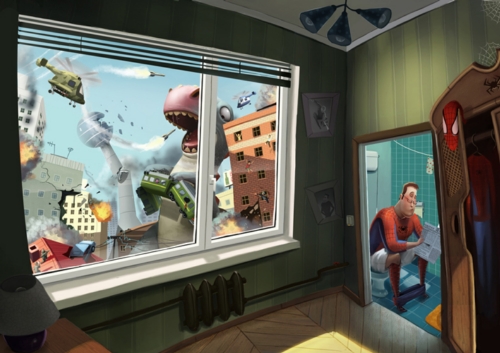
Pino Lamanna: Even though for the kind of work I specialize in, working in Illustrator or other vector tools would be common, I create most of my work in Photoshop. That might sound strange, but I can’t help it. There isn’t much of a difference at all, because Photoshop has vector editing capabilities, too.
Once I am happy with my design, I copy and paste to Illustrator to create the final output.
I cannot say that mastering Photoshop was difficult, because working in it has always been fun. The very first steps were kind of hard, though. I remember being overwhelmed by the gazillion options. It was learning by doing. I did a lot of tutorials, which I found online, to become comfortable with different techniques and methods.
Learning Illustrator wasn’t hard, either, because I was already used to the Adobe interface and I knew a lot of stuff about vector editing from Photoshop. And of course, there are tutorials for Illustrator everywhere.
Question: What is the main inspiration for your pieces? And how has the digital art community influenced your work?
Max Kostenko: My inspiration comes in different ways: sometimes after watching a film, sometimes from something I see in the street or on public transport. I always look for the work of known artists: it stimulates me to grow and improve my skills. I became acquainted with digital art through the Society of Digital Artists, and the first thought that came to mind was, “I could never draw like that.” But then I gradually drew things like leaves. Still, I’ve only began to walk the path of the artist and still have much to learn.
Pino Lamanna: Inspiration can come from anything, whether a cloud in the sky, an old movie or a box of sushi. My style has always been influenced by urban culture, music, movies, cartoons, etc. As a matter of fact, the digital art community has influenced my work a lot. Thanks to the Internet, I’ve gotten to know many interesting people and designers from all over the world, and in the end those communities have helped define me as an artist.
Question: How would you describe your creative process? What are some of its most important aspects?
Max Kostenko: The most important thing is a basic idea, I guess—a plan. If you have one, you can start drawing. Sometimes I get in my head a general sense of the result, and so I begin with the big shapes, placing them in a composition. When I’ve got the result, I start to color it, the most difficult thing for me. At the end, I complete the final details.
Pino Lamanna: I always have pen and paper by my side, even in my bedroom. You never know when ideas will pop in your mind, and you better save before you forget.
Brainstorming and sketching are crucial for me. If ideas pop up while working on my computer, I’ll usually put aside all the stuff I am doing and try to directly realize that idea in a design.
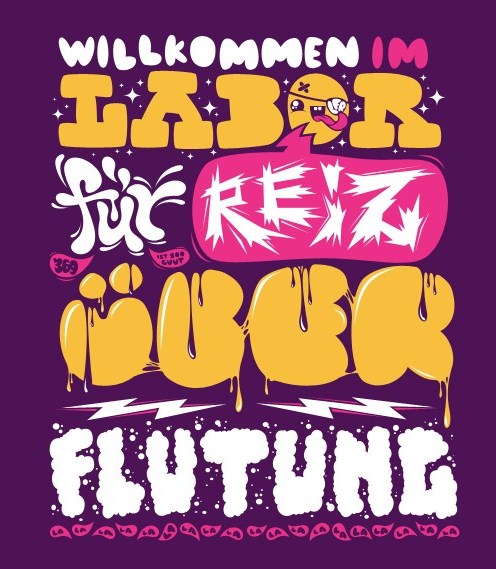
When working for clients, research is very important. Without a detailed brief, finding a design to match the client’s needs and expectations can be tricky. Therefore, I always ask clients to fill out my design questionnaire.
Another important aspect of my creative process is patience. Often, I find a good flow and can’t stop working on a particular design until I am happy (and exhausted). However, before publishing, I always force myself to wait till the next day. I’ll often find things that need to be changed, tweaked or tuned up, when I am looking at my work with a little distance.
Question: Have you ever gotten into traditional art? If so, tell us something about that experience.
Max Kostenko: The thing is, I wasn’t trained in an art school. But since childhood, I have liked drawing and thinking of stories. I’ve always drawn with a simple pencil. After school, I tried to enter the Automotive Design College but was rejected… even having passed the drawing exams marvellously well.
Pino Lamanna: As mentioned, I was into comic drawing as a kid, and I trained hard to create the world’s most powerful superheroes and villains. I can remember only a single character from these days: Super-Frog. (I know that’s lame, so don’t be mean!)
Later, I got some experience with graffiti and street art. Never made it to the All City Kings, though.
So, I don’t have much experience with traditional art, because my main focus for the last couple of years has been on digital.
Question: How would you define your relationship to traditional art? Who is your favourite artist?
Max Kostenko: I often visit the Tretyakov Gallery, and I can’t believe people could draw like that on a canvas centuries ago. I am surprised every time by the talent of classical artists.
I like Russian landscape artists. Vasily Polenov and Ivan Shishkin are top in skills for me.
6. Communication And Self-Promotion In The New Web
The artist’s life is not as simple as it may seem. Standing out from the crowd is not easy, which is why self-promotion is essential.
I queried Bob Flynn, Alex Dukal, Jayme McGowan, Chris Piascik and Irma Gruenholz for their thoughts on the art of self-promotion; on how to spread ideas, concepts and a deeper vision of their work; and on the impact of this kind of marketing.
Bob Flynn is a cartoonist who is interested in illustration, comics and animation. He currently resides in Boston, where he works as an animator and game designer for the children’s media company Fablevision. His work has appeared in publications such as Nickelodeon Magazine and Improper Bostonian.
Alex Dukal is an illustrator who was born and raised in Patagonia, Argentina. From a very young age, Alex has published comics and illustrations in the legendary Fierro magazine.
Back in his home town, he dedicated some years to painting and teaching illustration and comics. After working for some time mostly in Web design, Alex decided to get back into illustration. At the moment, he’s working mostly on children’s books and creating illustrations for design agencies.
Jayme McGowan is a freelance artist and 3-D illustrator based in Sacramento, California. She works with cut paper.
Question: Do you have a portfolio website? And which social networks are you currently on?
Bob Flynn: I have a website, but I’m very lazy about updating it. And I find I get less traffic there compared to, say, my blog, which is infinitely easier to add to. A portfolio website is more of a structured presentation, which is great for art directors and people looking to make a professional assessment of your work. It’s often static, and it offers little to no opportunity for two-way communication. You get little to no interaction with the art community except for a friendly email or two a month. A blog is dynamic and opens that dialogue. I now think of my website as a hub to help direct people where they need to go.
In addition to having a blog (my primary point of communication), I’m currently on Twitter, Facebook, Flickr and, most recently, Google Buzz. Is being on all of them worth it? Probably. I’ve found that you really can’t be in too many places—though there is certainly a sanity threshold. A different audience traffics each social space (with some overlap), so the way to reach the most people is to be everywhere.
Twitter is currently the best place to track people in the industry and to communicate with your peers—but not everyone is there. Facebook is where most everyone else is, although juggling friends, family and business is admittedly cumbersome. You have to weed through the clutter (I’m less a fan of its increasingly unwieldy interface), but you can certainly get traction over there. Flickr is the most straightforward: upload artwork, leave and receive comments. Buzz is new to the game and still hasn’t developed an identity of its own. But it’s another place you should probably be.
I can track most job leads and connections back to a tweet here or a comment there. Not to mention great friendships. Simply by spending time in these spaces, saying “Hi” and participating in a positive way, you really can’t go wrong.
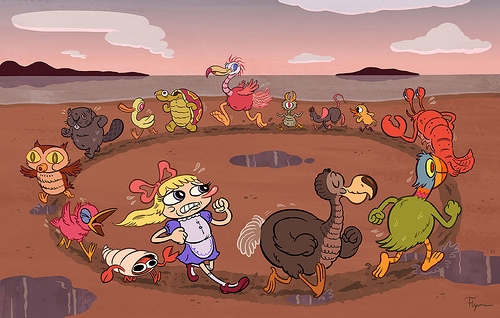
Alex Dukal: Yes, I have had a portfolio online since 1998, and I currently use Facebook a lot, Twitter not so much. I really like Flickr. I used Orkut when it first came out. I tried Google Buzz and did not like it. Every now and then I take a look at Google Wave to see if it’ll ever turn into something interesting. I have a Netvibes account that I hardly use. I have an account on Dribble. As you can see, I like to test new tools.
Jayme McGowan: Yes, I have a website for my portfolio, and pages on Facebook, Flickr and Etsy, and I recently caved and am now on Twitter as well.
Question: Do you write articles for your own blog or for other blogs and publications? Would you consider either an effective way to get your name out there?
Bob Flynn: I regularly post artwork to my blog, and I have written a few Flash drawing tutorials. Simply having an online presence is a good start, but think of the impact you could have by sharing information, ideas and helpful tips. People enjoy reading about process, so document your methodology as you work, and it will make for more interesting posts.
I wouldn’t be in this just to get my name out, though. If you’re all for show and self-promotion, you risk turning people away. Participation is key: I enjoy reading about what everyone else has to say. There’s more value in that, really.
Alex Dukal: I started writing little news on my website using Grey Matter, an old tool for blogging. Then I switched to Textpattern, and finally I separated my portfolio and blog (now in Blogger) as a matter of convenience. In the blog from time to time, I’ll write an article or tutorial. Judging from the feedback I get, I’d consider it an effective method of promotion.
Jayme McGowan: I have a blog where I post images of my work in progress and updates on current projects I’m involved in. I use it to give readers some insight into my process. I think it definitely gets people more involved in my work. Most of the visitors to my main portfolio website were directed there either from my own blog or from someone who did a post about my work on their blog. I think if you keep your blog up to date and post regularly, it will be an invaluable tool for getting your name out there.
Question: What are the challenges of creating a self-promotion strategy? Have you implemented a self-promotion strategy for yourself? Has it worked? If one is starting from scratch, how long does it take for a strategy to start working in their favor?
Bob Flynn: To be honest, I can’t say I’ve ever architected a real strategy. You’re talking to a guy who’s never even sent out a promo card. My approach has been to put myself out there and see what happens. Sort of the like old adage, “Just be yourself”—that’s how you stand out from the rest of the pack. I try to update my blog at least once a week to keep people coming back. Keeping up with your website’s stats is a good way to see what’s sticking (i.e. where your traffic’s coming from and what your most popular posts are).
Alex Dukal: Yes, of course, as a freelance artist, self-promotion is absolutely necessary. I think the first challenge is having something to say, something to show, a reliable portfolio to back up that promotion.
Personally, I placed my bet on a portfolio that shows my best work, something that showcases the illustrations rather than the website interface and that makes it accesible and simple. And then there’s the blog, which allows me to maintain other kinds of contact with people: social networks, forums, contacts database, etc. It’s a big garden; one must water and take care of it every day.
I think a strategy of this kind should be thought of in different phases. And you can’t expect a miracle before six months (though miracles do happen).

Jayme McGowan: My self-promotion strategy is fairly simple and involves social networks, as I mentioned earlier. When I got started creating a presence online, I came up with a plan by looking at the networks that successful artists who I admired were involved in, and I tried to do something similar. I was fortunate enough to generate interest in my work early on just by posting photos on Flickr and becoming an active member of the Etsy community. Many people who commission work from me say they found me on one of those two websites.
Now I use Facebook and Twitter (and my blog, of course) to keep people posted on what I’m up to. But to succeed in promoting yourself on any of these networks, you have to be truly interested in making friends and business contacts. You can’t just scream, “Hey, look at me!” all the time without giving anything back. I guess I have a subtler approach to self-promotion: let people know what you’re up to from time to time, and trust that they’ll follow you if they like what they see.
Question: Do you regularly submit your work to online galleries? Is that useful for gaining credibility and getting feedback on your work?
Bob Flynn: I created an account on a great website run by Nate Williams called Illustration Mundo a few years back, but I’ve never put my work in an online gallery (or paid for anything of the sort). I guess I view my blog as having that purpose. Flickr is a kind of gallery, though.
Pino Lamanna, also known as SchakalWal, is an illustrator and graphic designer from Germany who specializes in corporate design, character design and typography.
Question: Please introduce yourself and your work. How did you get started in the field?
Max Kostenko: My name is Max Kostenko. I’m 23 years old, and I am an artist and illustrator from Moscow. I have been doing illustrations for about one year. Before, I worked for three years as a Web designer in various Moscow Web studios.
Pino Lamanna: Hi. My name is Pino Lamanna. I am a 27-year-old half-Italian, half-German digital artist living and working in the city of Wuppertal, in Germany.
I currently work as a freelance designer, specializing in unique branding, handmade typography and character design. Most of my work is highly influenced by graffiti and street art, old-school cartoons and the music I listen to. My aim is to create stylish, unique and useful designs with an urban twist.
I took my first steps as a designer as a little kid, drawing comic strips with my own superheroes. Later, in my teenage years, I became interested in the graffiti and street art movement.
The first thing that attracted me to digital art was photo manipulation. Through that, I was introduced to Adobe Photoshop and several digital art communities. Later, I switched my focus to illustration, branding and typography, which I think suits me best.
Question: Tell us a bit about your artwork. What software do you use? How hard was it for you to learn?
Max Kostenko: In my work, I use only Photoshop. I started studying it when I wanted to start working as a Web designer. But as years passed, I understood what I really wanted to work on, because I found the job of designer boring, and so I started drawing some silly little men; that is, I tried to understand many of the principles by drawing them. In Photoshop, I do not use many tools to make my work look artistic—I just choose my normal round brush and start drawing.

Pino Lamanna: Even though for the kind of work I specialize in, working in Illustrator or other vector tools would be common, I create most of my work in Photoshop. That might sound strange, but I can’t help it. There isn’t much of a difference at all, because Photoshop has vector editing capabilities, too.
Once I am happy with my design, I copy and paste to Illustrator to create the final output.
I cannot say that mastering Photoshop was difficult, because working in it has always been fun. The very first steps were kind of hard, though. I remember being overwhelmed by the gazillion options. It was learning by doing. I did a lot of tutorials, which I found online, to become comfortable with different techniques and methods.
Learning Illustrator wasn’t hard, either, because I was already used to the Adobe interface and I knew a lot of stuff about vector editing from Photoshop. And of course, there are tutorials for Illustrator everywhere.
Question: What is the main inspiration for your pieces? And how has the digital art community influenced your work?
Max Kostenko: My inspiration comes in different ways: sometimes after watching a film, sometimes from something I see in the street or on public transport. I always look for the work of known artists: it stimulates me to grow and improve my skills. I became acquainted with digital art through the Society of Digital Artists, and the first thought that came to mind was, “I could never draw like that.” But then I gradually drew things like leaves. Still, I’ve only began to walk the path of the artist and still have much to learn.
Pino Lamanna: Inspiration can come from anything, whether a cloud in the sky, an old movie or a box of sushi. My style has always been influenced by urban culture, music, movies, cartoons, etc. As a matter of fact, the digital art community has influenced my work a lot. Thanks to the Internet, I’ve gotten to know many interesting people and designers from all over the world, and in the end those communities have helped define me as an artist.
Question: How would you describe your creative process? What are some of its most important aspects?
Max Kostenko: The most important thing is a basic idea, I guess—a plan. If you have one, you can start drawing. Sometimes I get in my head a general sense of the result, and so I begin with the big shapes, placing them in a composition. When I’ve got the result, I start to color it, the most difficult thing for me. At the end, I complete the final details.
Pino Lamanna: I always have pen and paper by my side, even in my bedroom. You never know when ideas will pop in your mind, and you better save before you forget.
Brainstorming and sketching are crucial for me. If ideas pop up while working on my computer, I’ll usually put aside all the stuff I am doing and try to directly realize that idea in a design.

When working for clients, research is very important. Without a detailed brief, finding a design to match the client’s needs and expectations can be tricky. Therefore, I always ask clients to fill out my design questionnaire.
Another important aspect of my creative process is patience. Often, I find a good flow and can’t stop working on a particular design until I am happy (and exhausted). However, before publishing, I always force myself to wait till the next day. I’ll often find things that need to be changed, tweaked or tuned up, when I am looking at my work with a little distance.
Question: Have you ever gotten into traditional art? If so, tell us something about that experience.
Max Kostenko: The thing is, I wasn’t trained in an art school. But since childhood, I have liked drawing and thinking of stories. I’ve always drawn with a simple pencil. After school, I tried to enter the Automotive Design College but was rejected… even having passed the drawing exams marvellously well.
Pino Lamanna: As mentioned, I was into comic drawing as a kid, and I trained hard to create the world’s most powerful superheroes and villains. I can remember only a single character from these days: Super-Frog. (I know that’s lame, so don’t be mean!)
Later, I got some experience with graffiti and street art. Never made it to the All City Kings, though.
So, I don’t have much experience with traditional art, because my main focus for the last couple of years has been on digital.
Question: How would you define your relationship to traditional art? Who is your favourite artist?
Max Kostenko: I often visit the Tretyakov Gallery, and I can’t believe people could draw like that on a canvas centuries ago. I am surprised every time by the talent of classical artists.
I like Russian landscape artists. Vasily Polenov and Ivan Shishkin are top in skills for me.
6. Communication And Self-Promotion In The New Web
The artist’s life is not as simple as it may seem. Standing out from the crowd is not easy, which is why self-promotion is essential.
I queried Bob Flynn, Alex Dukal, Jayme McGowan, Chris Piascik and Irma Gruenholz for their thoughts on the art of self-promotion; on how to spread ideas, concepts and a deeper vision of their work; and on the impact of this kind of marketing.
Bob Flynn is a cartoonist who is interested in illustration, comics and animation. He currently resides in Boston, where he works as an animator and game designer for the children’s media company Fablevision. His work has appeared in publications such as Nickelodeon Magazine and Improper Bostonian.
Alex Dukal is an illustrator who was born and raised in Patagonia, Argentina. From a very young age, Alex has published comics and illustrations in the legendary Fierro magazine.
Back in his home town, he dedicated some years to painting and teaching illustration and comics. After working for some time mostly in Web design, Alex decided to get back into illustration. At the moment, he’s working mostly on children’s books and creating illustrations for design agencies.
Jayme McGowan is a freelance artist and 3-D illustrator based in Sacramento, California. She works with cut paper.
Question: Do you have a portfolio website? And which social networks are you currently on?
Bob Flynn: I have a website, but I’m very lazy about updating it. And I find I get less traffic there compared to, say, my blog, which is infinitely easier to add to. A portfolio website is more of a structured presentation, which is great for art directors and people looking to make a professional assessment of your work. It’s often static, and it offers little to no opportunity for two-way communication. You get little to no interaction with the art community except for a friendly email or two a month. A blog is dynamic and opens that dialogue. I now think of my website as a hub to help direct people where they need to go.
In addition to having a blog (my primary point of communication), I’m currently on Twitter, Facebook, Flickr and, most recently, Google Buzz. Is being on all of them worth it? Probably. I’ve found that you really can’t be in too many places—though there is certainly a sanity threshold. A different audience traffics each social space (with some overlap), so the way to reach the most people is to be everywhere.
Twitter is currently the best place to track people in the industry and to communicate with your peers—but not everyone is there. Facebook is where most everyone else is, although juggling friends, family and business is admittedly cumbersome. You have to weed through the clutter (I’m less a fan of its increasingly unwieldy interface), but you can certainly get traction over there. Flickr is the most straightforward: upload artwork, leave and receive comments. Buzz is new to the game and still hasn’t developed an identity of its own. But it’s another place you should probably be.
I can track most job leads and connections back to a tweet here or a comment there. Not to mention great friendships. Simply by spending time in these spaces, saying “Hi” and participating in a positive way, you really can’t go wrong.

Alex Dukal: Yes, I have had a portfolio online since 1998, and I currently use Facebook a lot, Twitter not so much. I really like Flickr. I used Orkut when it first came out. I tried Google Buzz and did not like it. Every now and then I take a look at Google Wave to see if it’ll ever turn into something interesting. I have a Netvibes account that I hardly use. I have an account on Dribble. As you can see, I like to test new tools.
Jayme McGowan: Yes, I have a website for my portfolio, and pages on Facebook, Flickr and Etsy, and I recently caved and am now on Twitter as well.
Question: Do you write articles for your own blog or for other blogs and publications? Would you consider either an effective way to get your name out there?
Bob Flynn: I regularly post artwork to my blog, and I have written a few Flash drawing tutorials. Simply having an online presence is a good start, but think of the impact you could have by sharing information, ideas and helpful tips. People enjoy reading about process, so document your methodology as you work, and it will make for more interesting posts.
I wouldn’t be in this just to get my name out, though. If you’re all for show and self-promotion, you risk turning people away. Participation is key: I enjoy reading about what everyone else has to say. There’s more value in that, really.
Alex Dukal: I started writing little news on my website using Grey Matter, an old tool for blogging. Then I switched to Textpattern, and finally I separated my portfolio and blog (now in Blogger) as a matter of convenience. In the blog from time to time, I’ll write an article or tutorial. Judging from the feedback I get, I’d consider it an effective method of promotion.
Jayme McGowan: I have a blog where I post images of my work in progress and updates on current projects I’m involved in. I use it to give readers some insight into my process. I think it definitely gets people more involved in my work. Most of the visitors to my main portfolio website were directed there either from my own blog or from someone who did a post about my work on their blog. I think if you keep your blog up to date and post regularly, it will be an invaluable tool for getting your name out there.
Question: What are the challenges of creating a self-promotion strategy? Have you implemented a self-promotion strategy for yourself? Has it worked? If one is starting from scratch, how long does it take for a strategy to start working in their favor?
Bob Flynn: To be honest, I can’t say I’ve ever architected a real strategy. You’re talking to a guy who’s never even sent out a promo card. My approach has been to put myself out there and see what happens. Sort of the like old adage, “Just be yourself”—that’s how you stand out from the rest of the pack. I try to update my blog at least once a week to keep people coming back. Keeping up with your website’s stats is a good way to see what’s sticking (i.e. where your traffic’s coming from and what your most popular posts are).
Alex Dukal: Yes, of course, as a freelance artist, self-promotion is absolutely necessary. I think the first challenge is having something to say, something to show, a reliable portfolio to back up that promotion.
Personally, I placed my bet on a portfolio that shows my best work, something that showcases the illustrations rather than the website interface and that makes it accesible and simple. And then there’s the blog, which allows me to maintain other kinds of contact with people: social networks, forums, contacts database, etc. It’s a big garden; one must water and take care of it every day.
I think a strategy of this kind should be thought of in different phases. And you can’t expect a miracle before six months (though miracles do happen).

Jayme McGowan: My self-promotion strategy is fairly simple and involves social networks, as I mentioned earlier. When I got started creating a presence online, I came up with a plan by looking at the networks that successful artists who I admired were involved in, and I tried to do something similar. I was fortunate enough to generate interest in my work early on just by posting photos on Flickr and becoming an active member of the Etsy community. Many people who commission work from me say they found me on one of those two websites.
Now I use Facebook and Twitter (and my blog, of course) to keep people posted on what I’m up to. But to succeed in promoting yourself on any of these networks, you have to be truly interested in making friends and business contacts. You can’t just scream, “Hey, look at me!” all the time without giving anything back. I guess I have a subtler approach to self-promotion: let people know what you’re up to from time to time, and trust that they’ll follow you if they like what they see.
Question: Do you regularly submit your work to online galleries? Is that useful for gaining credibility and getting feedback on your work?
Bob Flynn: I created an account on a great website run by Nate Williams called Illustration Mundo a few years back, but I’ve never put my work in an online gallery (or paid for anything of the sort). I guess I view my blog as having that purpose. Flickr is a kind of gallery, though.
Alex Dukal: Not at all to both questions. Ten years ago, if someone invited you to show some of your work in an online gallery, it was cute, flattering. Today, I think we have to be careful, because the selection criteria is often not that great, and one must pay attention to those details as well. If you display your work in the wrong place, it could have a negative result. In principle, credibility should come from the work itself.
Jayme McGowan: I have a profile on Illustration Mundo, which is a great website that functions mainly as a directory of illustrators, not a gallery per se. Honestly, I don’t participate in any online galleries. I’m sure that’s a great way to get feedback from your peers, but I don’t know that it will give you added credibility as a professional. I can maintain only so many Web pages myself, so I try to limit them to the ones I get the most benefit from, those where I believe art directors and buyers might find me.
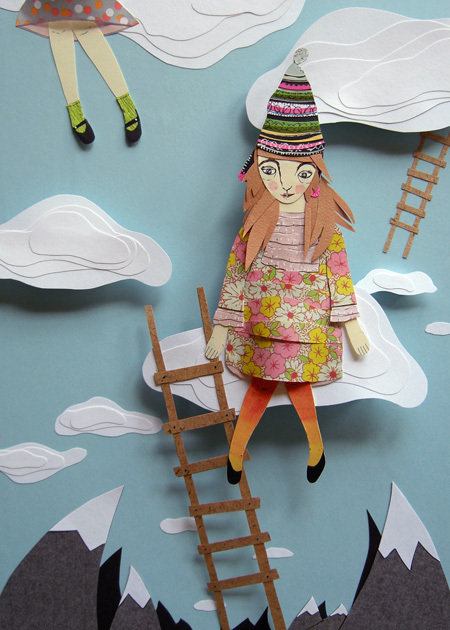
Chris Piascik is a freelance designer and illustrator who is active in the design community. With six years of professional experience at award-winning firms in New England, he has had work published in numerous books and publications, including the Logo Lounge series, Typography Essentials and Lettering: Beyond Computer Graphics. He currently posts drawings on his website daily.
Irma Gruenholz is a Spanish illustrator who specializes in clay and other materials, allowing her to work in volume. Her work is used in books, magazines, advertisements and online marketing.
Question: Are you an active participant in every social community you have joined? How much time do you set aside to interact in social media? Do you commit to posting new work and personal updates regularly?
Chris Piascik: I stay active in quite a few social communities. I admit that I have joined some that I couldn’t keep up with though! I don’t really schedule time for social networking, although that’s probably a good idea. Instead, I scatter it throughout the day, whether it’s browsing Twitter on my iPhone while exporting a big file on my computer or procrastinating the start of a new project. It’s all about multi-tasking! I think the biggest thing that has helped me with social networking is my daily drawings. I post a new drawing Monday to Friday on Flickr, and from there I post it to my personal website, and those updates flow to my Twitter and Facebook accounts.
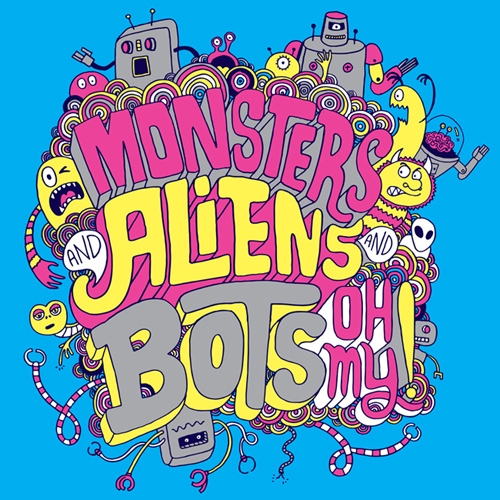
Irma Gruenholz: Yes, I have a blog, and I participate in some social communities, such as Flickr and Behance. Unfortunately, I don’t have much time for a very active presence. I would like to devote more time because it is a good way to keep up with and see the work of other artists.
Question: At the moment, which community is the most valuable for finding job opportunities?
Chris Piascik: I think most of the networks out there have value. I do think Flickr works really well, though. My Flickr page seems to get the most traffic out of all my websites. Flickr is so vast that a lot of people use it for image research. I think my daily updates help my work not get lost.
Irma Gruenholz: Based on personal experience, Behance is a good platform for showing your work to art directors and art buyers. I’ve gotten some work through it.
Question: How important is crafting the messages you send out and keeping your website looking professional?
Chris Piascik: I don’t censor myself that often. I think keeping things honest is a good thing. My work has some personality; much of it has a loose quality—pairing that with a cold or professional Web presence would seem odd. Expanding your social networks requires you to be yourself… just as long as “yourself” is interesting!
Irma Gruenholz: Internet presence is very important for the artist. It is the best way to exhibit your work to the rest of the world. So, keep your website updated, and make it easy to communicate with people who want to follow your work.
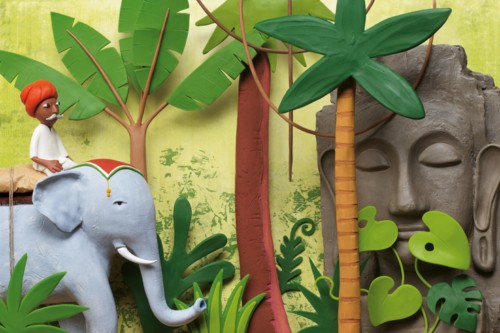
Question: How do you make time for social networks? Are you committed only to websites from which you can get some professional benefit?
Chris Piascik: I have completely given up sleep. I really just sprinkle it throughout my day. It’s a nice way to start my day while drinking my coffee or eating some lunch. I wouldn’t say that I limit myself only to websites that I benefit from, though my opinion is that all networks help. Visibility is visibility. I use social networking to stay in touch with friends as well, so it’s not strictly business for me.
Irma Gruenholz: I have little time to devote to social networks, so I prefer to focus on communities related to my profession.
Featured Artists
To grasp the meaning of art and how it has evolved over time, I interviewed Alexander Daniloff and Jonathan Ball. To explore the aesthetics of digital art, I spoke with Jan Willem Wennekes, who touched on some important points related to the differences between digital artists and other artists and the nature of digital art itself.
I also feature Nate Williams and Travis Lampe, in an effort to learn more about their work and their relationship to technology, including digital art tools and social media, and to explore the way the Internet influences the development of art.
To better understand the relationship between contemporary artists and new methods and tools for creating art, I’ve interviewed Max Kostenko and Pino Lamanna. I focused on their creative process and professional experience, from their entry into the field right up to their current sources of inspiration.
Finally, I interviewed Bob Flynn, Alex Dukal, Jayme McGowan, Chris Piascik and Irma Gruenholz, asking their opinion of the challenges that artists face when promoting themselves and their work in the new Web, trying to capture their experience with social media and online art communities.
Each of these artists has a particular style and is an active member of the artistic community. As such, they could be a source of inspiration to many. I hope their insights are helpful.
What about you? What does art mean to you?








